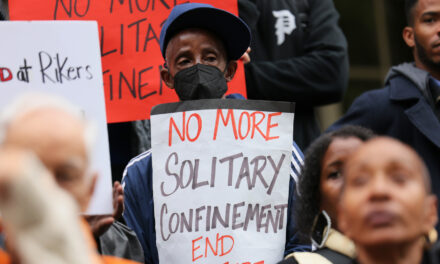
After Unrest, Kenosha Wrestles With What Comes Next
KENOSHA, Wis. — The Rev. Lawrence L. Kirby has listened to a determined refrain from fellow Kenosha residents who have endured the tumult of the past two weeks. We need to rebuild our burned businesses, they tell him. We need to get back to normal.
That’s where he interjects. “Let’s not get back to anything,” he said.
Kenosha erupted in outrage and division over days of tragedy, violence and destruction. Since August 23, the city has been the scene of a police shooting that left a man paralyzed, the killing of two protesters in the street, emotional demonstrations and several nights of looting and fires.Last week, it became a hotly contested presidential battleground, as President Trump visited, followed by Joseph R. Biden Jr., the Democratic candidate.
As a nightly curfew in Kenosha has been lifted and protests have quieted, the question of what comes next for this city has revealed an even wider chasm between residents.
Should it follow the leads of Ferguson, Mo., and Minneapolis after their own periods of unrest, as some in Kenosha have argued, and consider diversifying its slate of mostly white elected officials, re-examine longstanding policies and pass measures aimed at reforming policing?
Or should residents view the last two weeks as an awful aberration, events that some residents described as rioting largely by outside agitators?
“We haven’t had a huge event like this, something where we’ve really had to have a conversation about race,” said Tim Thompkins, a former affirmative action officer for the city of Kenosha. “That’s why we’re going to have such difficulty.”
The death of George Floyd in Minneapolis in May sparked a handful of protests in downtown Kenosha by Black Lives Matter activists throughout the summer. But the city itself has not faced a real racial reckoning until now. That may be in part because it is a small, mostly white community. Of its 100,000 residents, 11 percent are Black, a proportion that has increased only slightly in the past 30 years.
Kenosha’s struggles for the last generation have been focused on rebuilding a faltering economy after car manufacturing mostly disappeared in the late 1980s, erasing 10 percent of the city’s work force.
And while most people in the city lean Democratic, voting for Hillary Clinton over Mr. Trump in 2016 by 17 percentage points, there is a streak of social conservatism reflected in the “Back the Blue” yard signs all over town, and a tendency to explain individual incidents as the errors of particular police officers rather than as systemic problems with policing.
“Is there a bad apple in every profession? Yes, there is,” said Rocco LaMacchia, a six-term city alderman and the chairman of the committee that oversees public safety. “But you don’t defund the police department because of one person. That’s not happening in Kenosha. As long as I’m alive and an alderman, it’s not going to happen.”
Mr. LaMacchia favors one change to city policing: He has suggested moving up the purchase of body-worn cameras for police to 2021 from 2022, the original plan.
Anthony Kennedy, an alderman who represents the heavily Black district where Mr. Blake was shot, argues that deeper, more fundamental change is needed.
“For people who say this town is fine and it’s just one bad apple, you have to understand that your view is not monolithic for the city of Kenosha,” Mr. Kennedy said. “And you have to understand that there are people in this city who are living a distinctly different experience.”
Activists have called for the police officer who shot Mr. Blake, who is currently on administrative leave, to be fired; they also want swift changes to the leadership of the police department and the county sheriff’s department, whose top officials are both white.
“The chief of police needs to resign, and so does the sheriff,” said Kejuan Goldsmith, a Black activist leader who has attended so many marches that his voice has grown hoarse. “I think that’s what we need in Kenosha.”
In an email, Mayor John Antaramian reiterated his support for Daniel Miskinis, the police chief, and David Beth, the sheriff.
“Regarding some of the larger systemic issues in the city, I think the events of the past few days provide us with an opportunity to re-examine many aspects of our community as we look for ways to rebuild a Kenosha that provides a bright future for all of our citizens,” he said.
In interviews across the city, residents said they were disturbed by the shooting of Mr. Blake and agreed that it would be a long time before there could be a recovery.
But there was little consensus on how much — if anything — needed to change.
Craig Ramig, who is white and is a machine operator at a cardboard company, said he simply wanted things to calm down in Kenosha, where he had moved about three years ago from Illinois.
Mr. Ramig said he had one demand of city officials: “Stop my town from burning.”
“There’s really nothing else,” he said. “I like the cops out here, I like everything out here. That’s why I moved out here. Keep my city from burning.”
The demonstrations that filled Kenosha’s usually sedate downtown streets have largely faded, even as businesses across town remained tightly boarded up with plywood. Hundreds of members of the National Guard who came into the city to stem looting and damage have been sent home.
On Thursday, the morning after the curfew was lifted, Rita Ramacci, a professional chef who is white, was meeting friends at Harborside Common Grounds, a cafe on the shore of Lake Michigan.
She said she considered herself a fighter for social justice and had listened to the protesters’ message. “There isn’t any reason why any human being should be persecuted because of what color they are,” she said.
Still, she added, “I personally don’t think this town has a problem. I think some of the problems are generated from people outside of here.”
Police officials said that of the 175 people who were arrested in Kenosha for violations related to the unrest, most were from Wisconsin, but mostly from outside the city of Kenosha.
Gov. Tony Evers, a Democrat, said in an interview that he was pushing for changes on the state level, including new policies on police officer training and use of force, despite encountering resistance from Republicans who control the State Legislature.
“I don’t think anybody who thinks about it for too long will disagree with our efforts around this,” Mr. Evers said.
On Sunday,activists have planned a public event in Kenosha, inviting the community to offer ideas on how to move forward.
Some in Kenosha said the shooting showed the city was past due for basic police reforms that have already been adopted across the country.
Gaboris Williams, who is Black and grew up in Kenosha, said he still carried searing memories of being hassled by the police as a teenager. The exchanges were frequent enough, he said, that he began to learn the names of individual officers who stopped and questioned him.
“There’s a lot of things that go on here, the racial profiling, cops snatching you up for no reason,” he said. “It’s ridiculous.”
He left the city for Illinois when he was 17, he said, and visits occasionally, but not for long.
”They need more training and they need cameras,” Ashley Kannin said from her porch on a recent evening. “They should not be pulling out their guns right away. They use the gun as a result of trying to make a quick arrest, and it shouldn’t be like that.”
Asked whether she thought such changes would now be put in place, Ms. Kannin and her friend, Rachel Porter, both of whom are white, said that they were not hopeful.
Even though things have calmed in Kenosha, police officers are on edge after the chaos of the marches and the shooting of several protesters, said Ms. Porter, who predicted that the department, now under pressure, would be even more resistant to an overhaul.
”It’s probably going to be worse,” she said.
Nicholas Bogel-Burroughs contributed reporting from Kenosha, Wis.

















